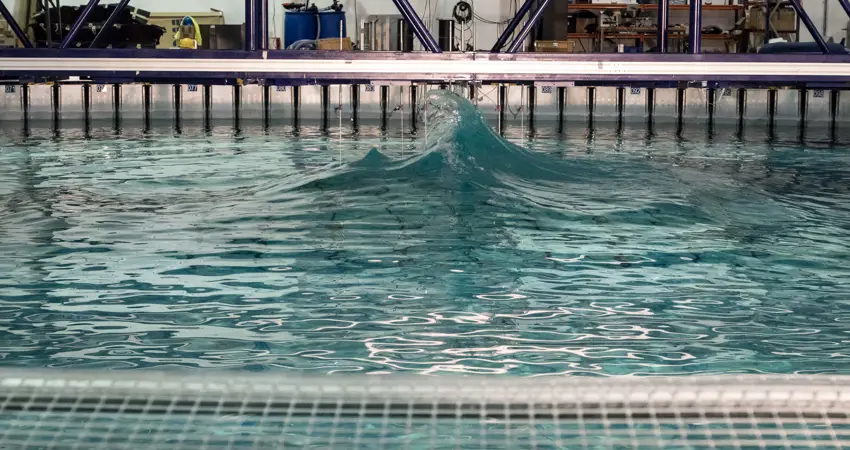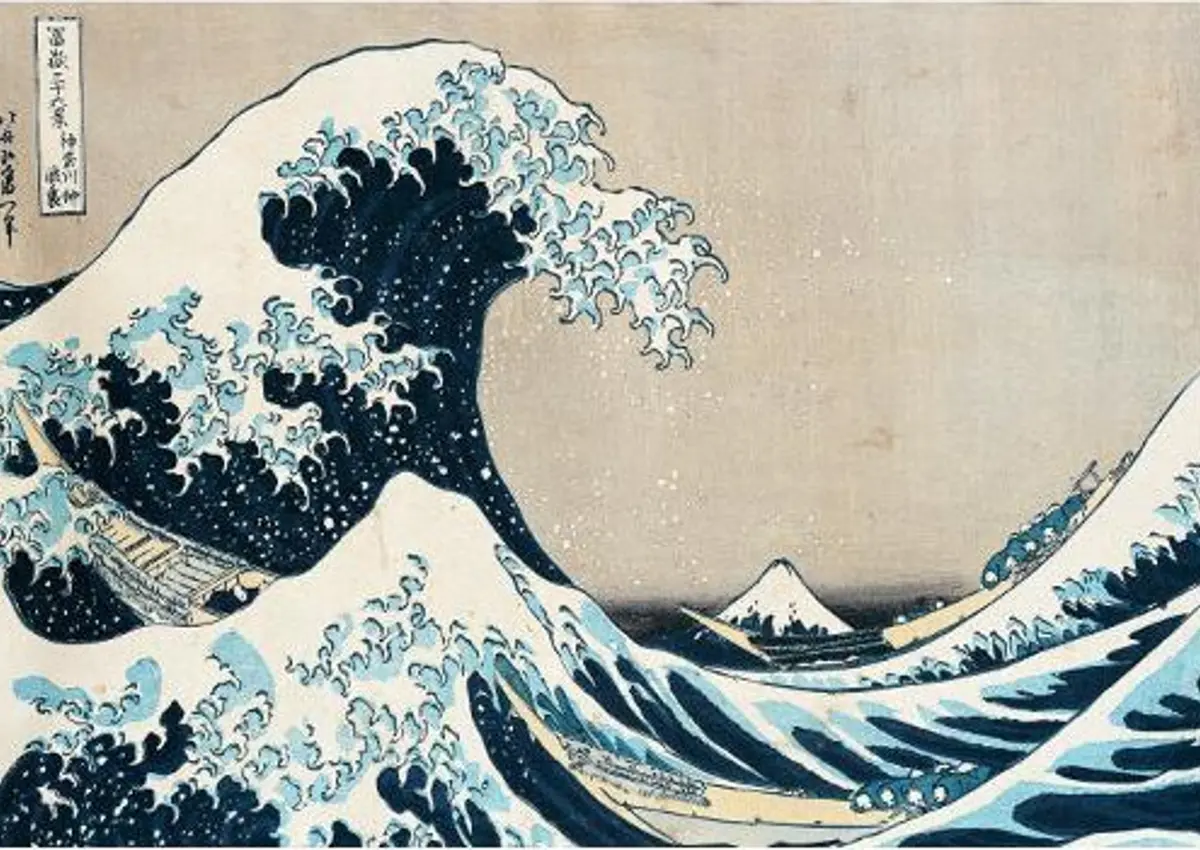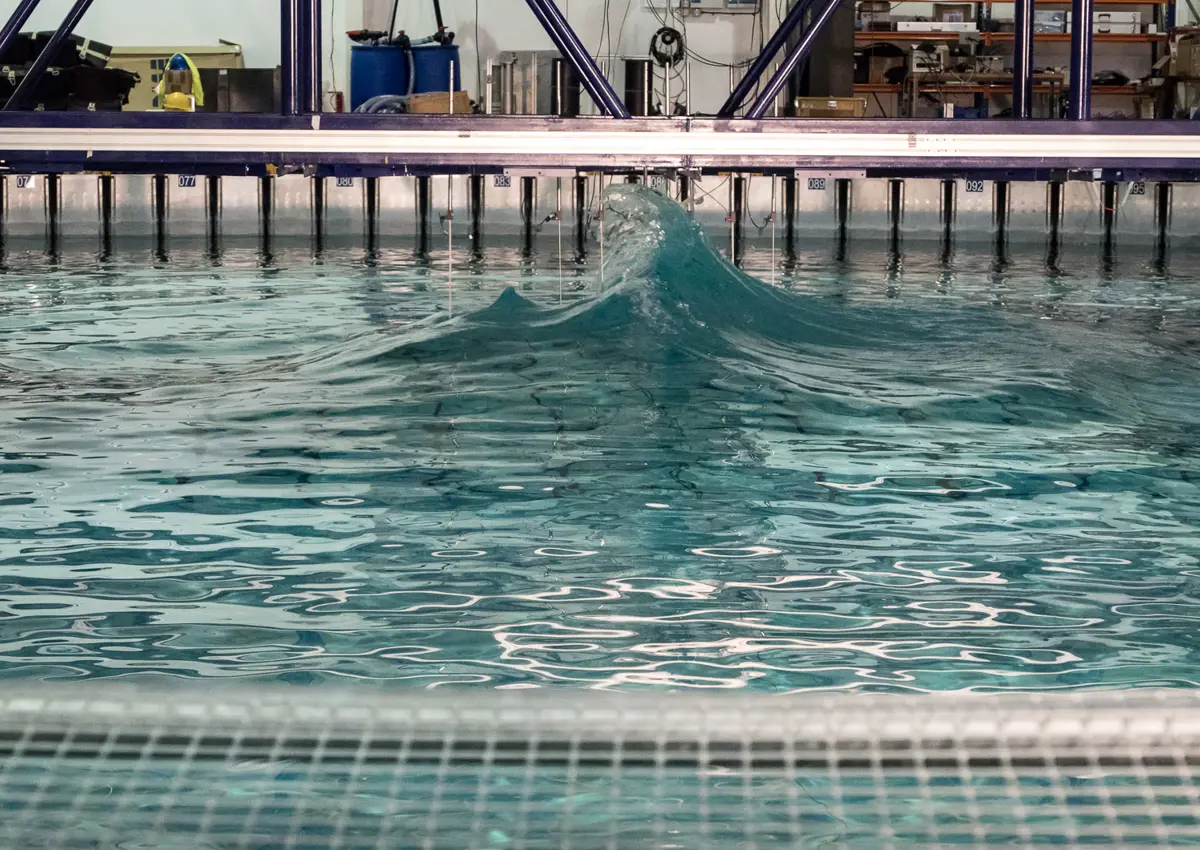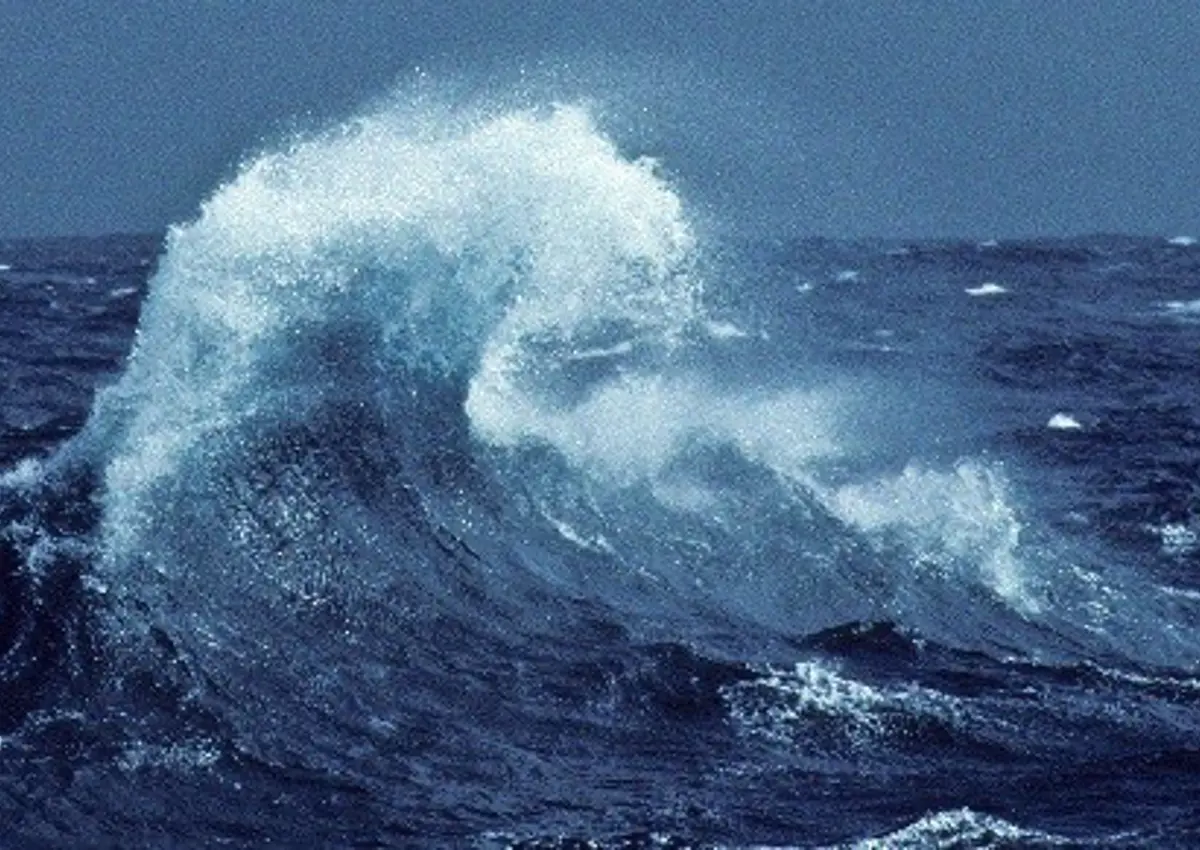23 Jan 2019
Famous freak wave recreated in laboratory mirrors Hokusai’s ‘Great Wave’
A team of researchers based at the Universities of Oxford and Edinburgh have recreated for the first time the famous Draupner freak wave measured in the North Sea in 1995.

The Draupner wave was one of the first confirmed observations of a freak wave in the ocean; it was observed on the 1st of January 1995 in the North Sea by measurements made on the Draupner Oil Platform. Freak waves are unexpectedly large in comparison to surrounding waves. They are difficult to predict, often appearing suddenly without warning, and are commonly attributed as probable causes for maritime catastrophes such as the sinking of large ships.
A team of researchers led by Dr Mark McAllister and Professor Ton van den Bremer (Engineering Science, Oxford) in collaboration with Dr Sam Draycott at the University of Edinburgh, set out to reproduce the Draupner wave under laboratory conditions in Edinburgh's FloWave Ocean Energy Research facility, to understand how this freak wave was formed in the ocean.
They successfully achieved this reconstruction by creating the wave using two smaller wave groups and varying the crossing angle – the angle at which the two groups travel. This project builds upon work previously carried out at the University of Oxford by Professors Thomas Adcock and Paul Taylor.
Freak waves are unexpectedly large in comparison to surrounding waves. They are difficult to predict, often appearing suddenly
Dr Mark McAllister said: ‘The measurement of the Draupner wave in 1995 was a seminal observation initiating many years of research into the physics of freak waves and shifting their standing from mere folklore to a credible real-world phenomenon. By recreating the Draupner wave in the lab we have moved one step closer to understanding the potential mechanisms of this phenomenon.’
It was the crossing angle between the two smaller groups that proved critical to the successful reconstruction. The researchers found it was only possible to reproduce the freak wave when the crossing angle between the two groups was approximately 120 degrees.
When waves are not crossing, wave breaking limits the height that a wave can achieve. However, when waves cross at large angles, wave breaking behaviour changes and no longer limits the height a wave can achieve in the same manner.
When waves cross at large angles, wave breaking behaviour changes and no longer limits the height a wave can achieve
Professor Ton van den Bremer said: ‘Not only does this laboratory observation shed light on how the famous Draupner wave may have occurred, it also highlights the nature and significance of wave breaking in crossing sea conditions. The latter of these two findings has broad implications, illustrating previously unobserved wave breaking behaviour, which differs significantly from current state-of-the-art understanding of ocean wave breaking.’
To the researchers’ amazement, the wave they created bore an uncanny resemblance to ‘The Great Wave off Kanagawa’ – also known as ‘The Great Wave’ – a woodblock print published in the early 1800s by the Japanese artist Katsushika Hokusai. Hokusai’s image depicts an enormous wave threatening three fishing boats and towers over Mount Fuji which appears in the background. Hokusai’s wave is believed to depict a freak, or ‘rogue’, wave.
The laboratory-created freak wave also bears strong resemblances with photographs of freak waves in the ocean.
The researchers hope this study will lay the groundwork for being able to predict these potentially catastrophic and hugely damaging waves that occur suddenly in the ocean without warning.
Dr Sam Draycott at the University of Edinburgh said: ‘The FloWave Ocean Energy Research Facility is a circular combined wave-current basin with wavemakers fitted around the entire circumference. This unique capability enables waves to be generated from any direction, which has allowed us to experimentally recreate the complex directional wave conditions we believe to be associated with the Draupner wave event.’
Read the full paper: Laboratory recreation of the Draupner wave and the role of breaking in crossing Seas, Journal of Fluid Mechanics.
Watch video of the recreated wave:
Press release courtesy of University of Oxford Press Office

The Great Wave off Kanagawa by Katsushika Hokusai

Laboratory recreation of the Draupner wave

Image of crossing wave breaking observed by Véronique Sarano in the southern ocean




